We visited Montepulciano a few times last summer. The first visit was brief, having walked there and knowing we had to walk back, we stayed just for lunch and a quick look around. Through the gate, we followed the Corso winding steeply up through the town, feeling hungry and exhausted, sightseeing long enough for somewhere to rest awhile before heading back. We climbed all the way to the church of Santa Maria at the top of the town, only to return back down again, eventually finding a table near the Porta al Prato where we first came in.
After lunch we found time for Pulcinella on his clock tower in Piazza Michelozzo.
At no.73 on the Corso is Palazzo Bucelli, which has a medley of Etruscan urns, reliefs, and inscriptions embedded in the lower part of its facade, one of the most unusual lapidary collections to be seen. In the 18th century this was the residence of the scholar and antiquarian Pietro Bucelli, who kept his remarkable collection of Etruscan finds from excavations in the region here (later donated to Grand Duke Peter Leopold and now in the archaeological museum in Florence).
Blue Guide Tuscany: Alta Macadam
※
On our second visit two days later, we came to Montepulciano by way of the church of San Biagio.
Beautifully sited on the hillside just below the town, and preceded by a lovely cypress avenue, is the huge Tempio di San Biagio, one of the great church buildings of the High Renaissance. It was designed by Antonio da Sangallo the Elder (1518-34) for the Ricci family, in honour of a miraculous 14th century image of the Madonna which had survived on the wall of an earlier church here. Inspired by the architecture of Bramante (and the ideas for the new St Peter’s in Rome), it is remarkable for its Greek-cross plan with a central dome – one of the very few churches in Italy with this design… The travertine exterior is of classical sobriety, and the beautifully proportioned design of the facade is repeated on the two sides. Only one of the towers was finished, and actually completed in 1545 by Baccio d’Agnolo, who also built the lantern of the dome. The interior, which is also very beautiful, repeats and elaborates the classical features of the exterior, with sculptural decoration carved in high relief in the yellow sandstone. The canons’ house nearby, with open loggias on both floors, was built after Sangallo’s death. Since 1963 the sanctuary has been dedicated to the Madonna ‘del Buon Viaggio’, the protector of travellers.
Blue Guide Tuscany: Alta Macadam
A wedding ceremony was in progress when we arrived, so I waited in the shade of the loggia.
After the wedding we were allowed inside. The church is said to be one of the most harmonious Renaissance creations in Italy, constructed inside and out from soft, honey-coloured travertine.
We left San Biagio and climbed the hill to Montepulciano, entering the town through Porta di Grassi.
You can just make out the dome of the church at the bottom of the Via di San Biagio.
Artist at Work
We continued on up the zig zag streets to the Piazzetta di San Francesco where we came upon this wonderful panorama. Click on the image to get a better view. San Biagio is nestled in the trees at 10 o’clock and Montefollonico is on the horizon at 2 o’clock. And the sun is slowly setting in the west.
※
Next time, five days later, breakfast at Caffè Poliziano, looking east for the rising sun.
Montepulciano is one of the largest hilltop towns in southeast Tuscany, its main street climbing a steep limestone ridge along the backbone of the town, and all the way an endless chain of wine shops.
The famous Vino Nobile di Montepulciano is one of just five DOCG wines in Tuscany (denominazione di origine controllata e garantita). This is made principally from a Sangiovese clone called Prugnolo gentile, cultivated in a small area between the Val d’Orcia and Val di Chiana where the soil is sandy and well drained. It was in the 17th century that the wine from these vineyards was first called ‘nobile’, apparently because it was the wine most often to be found at the tables of Tuscan nobles. Now aged in oak casks, its aromatic quality was greatly enhanced in the mid-20th century, and it is today generally considered one of the best red wines in Italy.
Blue Guide Tuscany: Alta Macadam
Some shops advertise tours through the underground tunnels of their ancient wine cellars.
La Dolce Vita was a favourite enoteca/ristorante. We ate here twice, once outside and once inside. The first time as the sun went down and the streets were filled with prospective diners, we felt fortunate to find an outside table. The second time, five days later, we came back for lunch and sat inside its cool vaulted shade, surrounded by racks of interesting and delicious local wines.
It seemed only right to call in at each enoteca for a taste, it was the polite thing to do before rolling back down the hill. But, at risk of appearing rude, we resisted the temptation and saved our sobriety for the Piazza Grande, where we found the Duomo, the Museo Civico and the Palazzo Comunale.
The impressive clock-tower offers fine views of Val d’Orcia and Val di Chiana, stretching from Monte Amiata to Siena and east to Lake Trasimene. But we missed out, not realising we were allowed to climb it. If we had, these are some of the sights we would have seen…
Palazzo Tarugi
Duomo
San Francesco
San Biagio
I found the above images at Montepulciano Blog in a post from 2014 about the Torre Comunale.
The Duomo, cathedral of Santa Maria Assunta, was built between 1594 and 1680 on the site of an earlier church, incorporating its original bell tower. But the facade remains undressed, still awaiting a veil of holy marble, its naked and unashamed innocence more reminiscent of a municipal fire station.
But inside it’s a different story…
Altarpiece triptych: Assumption of the Virgin by Taddeo di Bartolo
The central panel of the triptych shows the monumental figure of the Assumption surrounded by angels, while underneath are visible the twelve apostles who throng around the empty tomb of Mary. Above the Assunta we see the Coronation of the Virgin. The three scenes are to be read as a time sequence from the bottom up with the Death of the Virgin, her Assumption and her Coronation. The two side panels depict various saints in the attitude of worshiping the central figure of the Madonna, while on the four pillars that surround the various panels we see twelve small figures of Doctors of the Church. Above the two side panels are given the Angel of the Annunciation (left) and the Madonna Annunziata (right). The dais below depicts nine scenes from the life of Jesus Christ.
La Madonna del Pilastro: Sano di Pietro
At the Museo Civico there’s an eclectic collection that includes the magnificent Travertine Door of Montepulciano. This Etruscan stone door was formerly part of the Collection Paolozzi, one of the major 19th century antique collections in the region. It is thought to come from the entrance to a tomb. According to the label it is – A door on the beyond, between reality and imagination.
The museum is a treasury of all kinds of artefacts, many of them uncredited, or whose credentials
I failed to notice. I’m guessing this is an Etruscan bronze figurine but I didn’t catch his name.
Coronation of the Virgin: Jacopo di Mino del Pellicciaio
St Agnes with a Model of the City of Montepulciano: Domenico Beccafumi
Interior of Tempio di San Biagio: Ranieri Rossi
Votive Painting for a Miracle in the Hall of the Palace 1671
And lastly, the painting we’d seen earlier in the Duomo. There it was called La Madonna del Pilastro (Madonna of the Pillar), then I checked in the Blue Guide under Museo Civico where it says – Also here is a 15th century ‘Madonna and Child’ from the duomo by Sano di Pietro. Now I’m confused. This one is gorgeous, but which is the original and which is the facsimile?
From the terrace of Palazzo Ricci there’s a fine view over the rooftops to San Biagio down below
and back to Montefollonico where we came from, perched on its distant parallel hilltop horizon.
As we were leaving I sat in the Loggia di Mercato and said goodbye to Montepulciano.
※
Montepulciano / Vino Nobile di Montepulciano / Aerial View of Montepulciano
PS: San Biagio Through The Trees, a painting by Paul Finn.


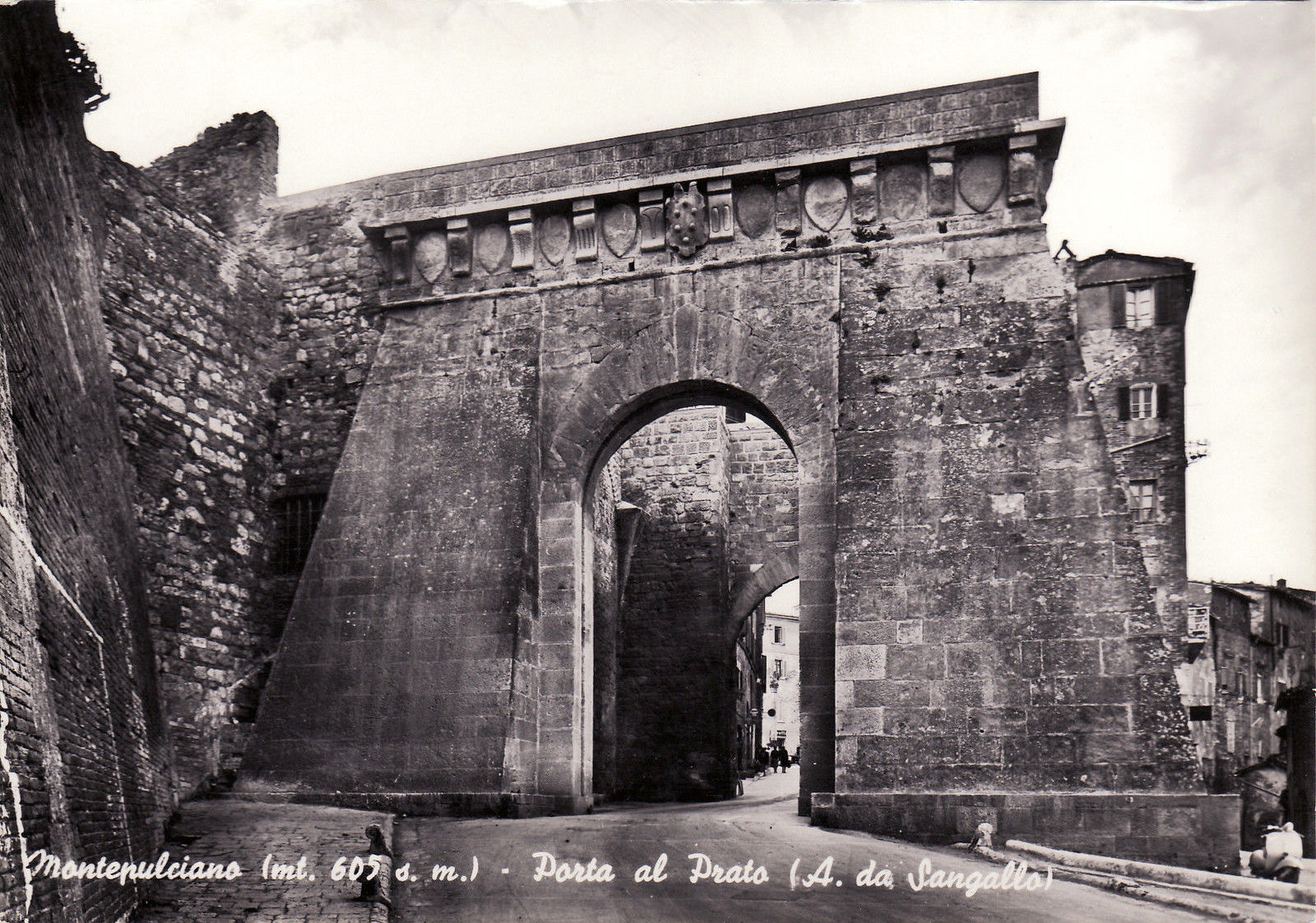
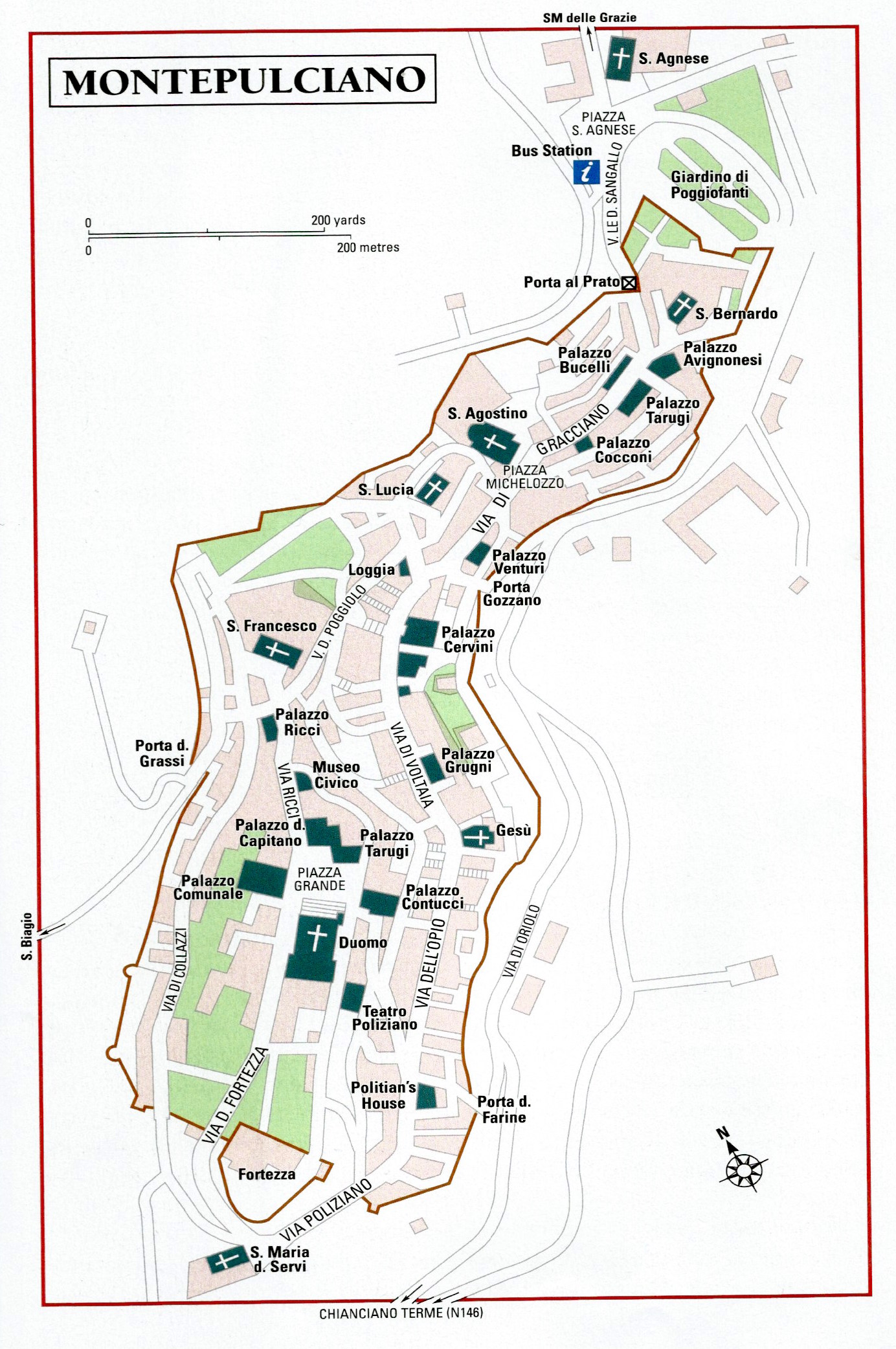

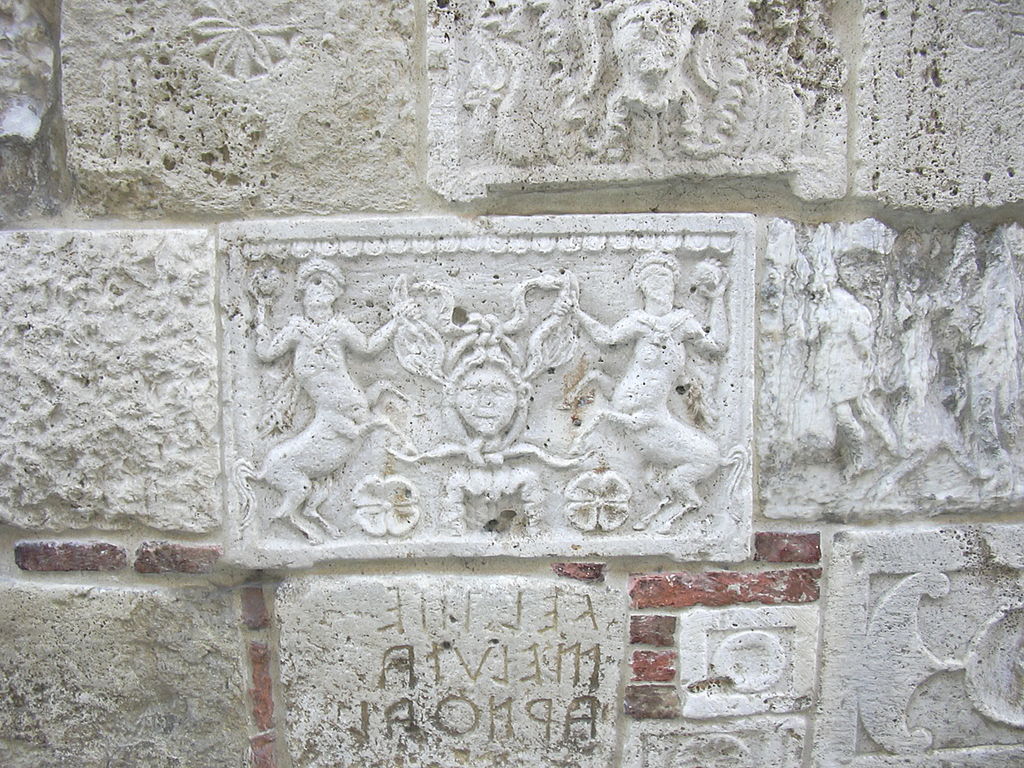




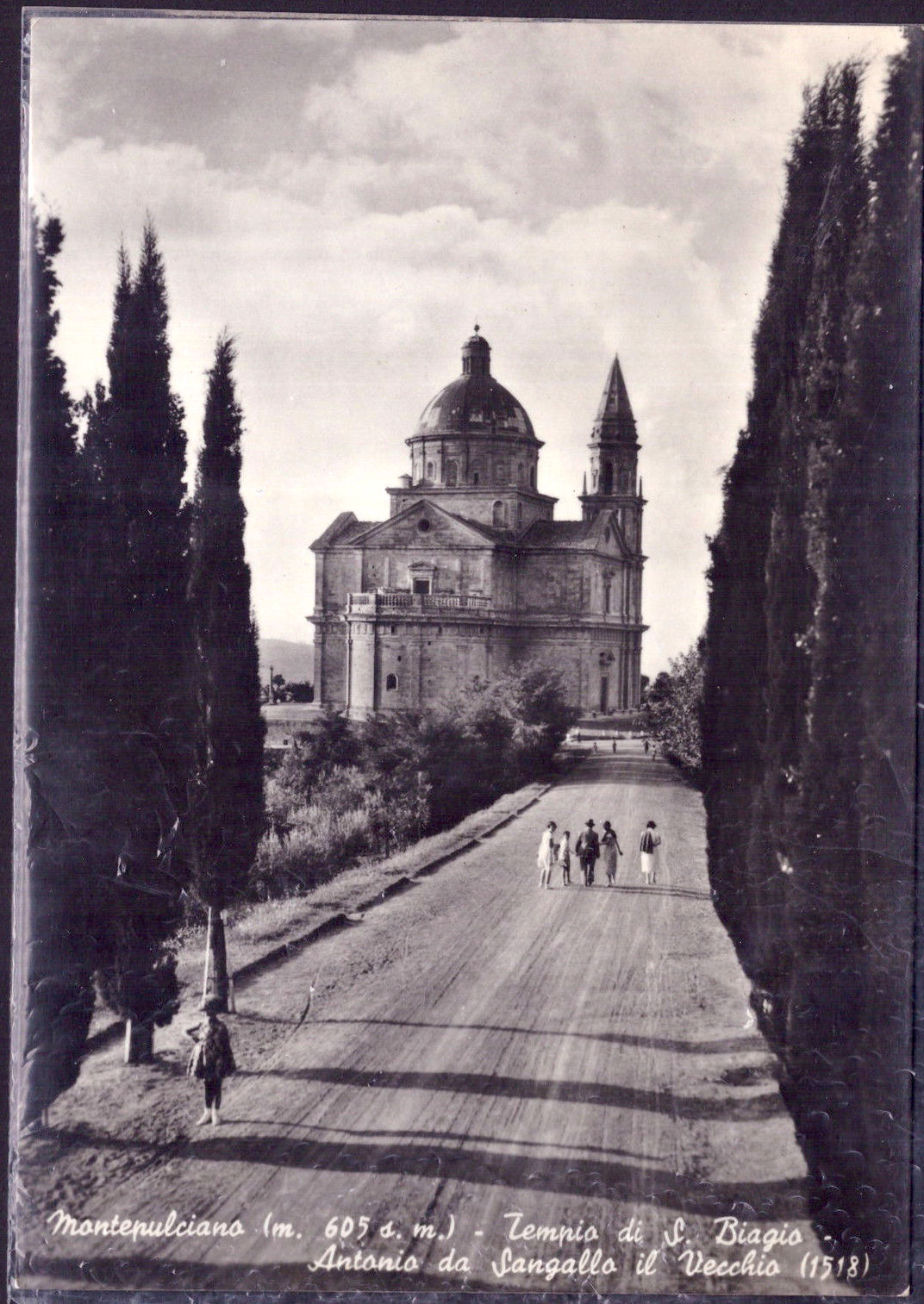






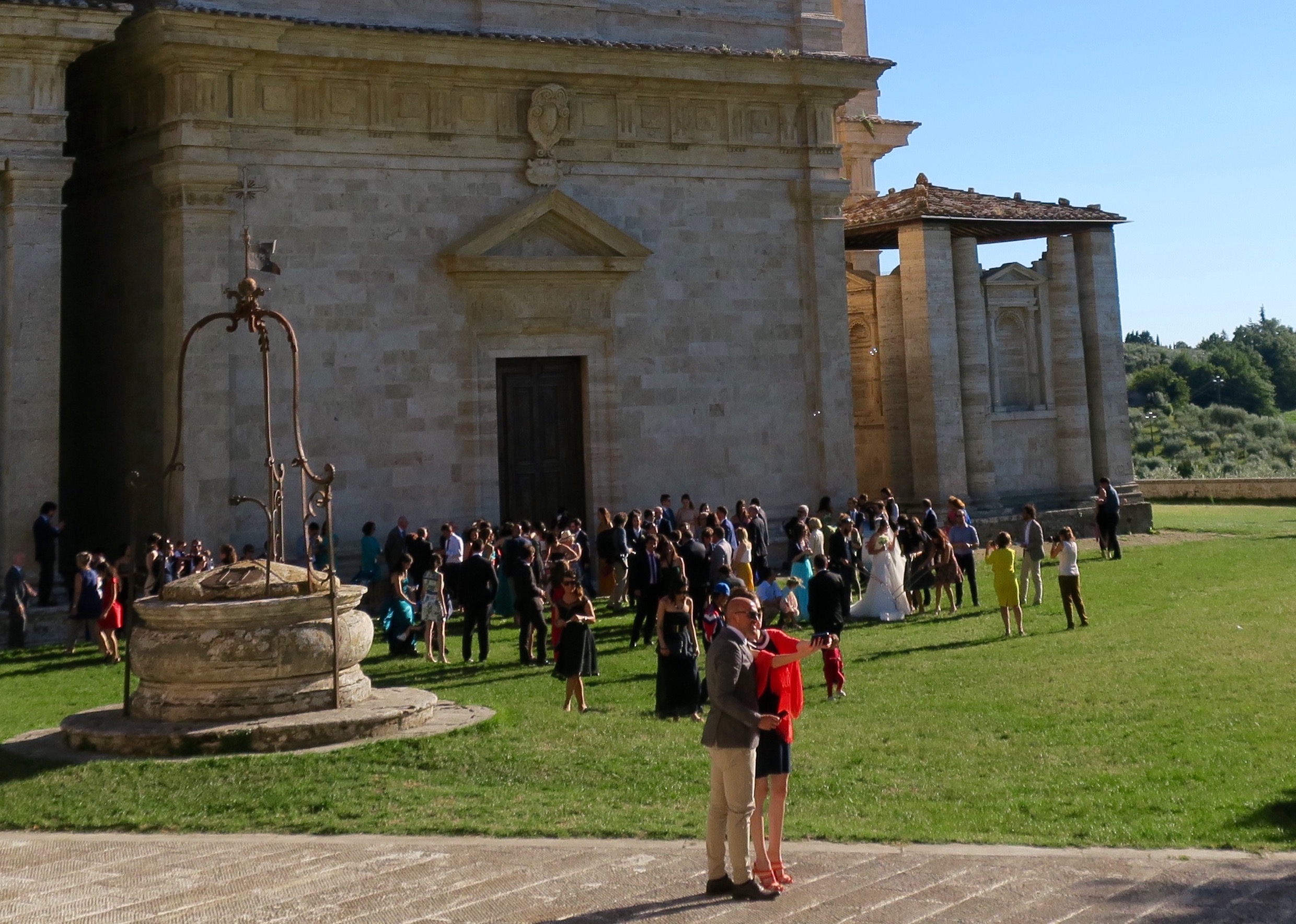






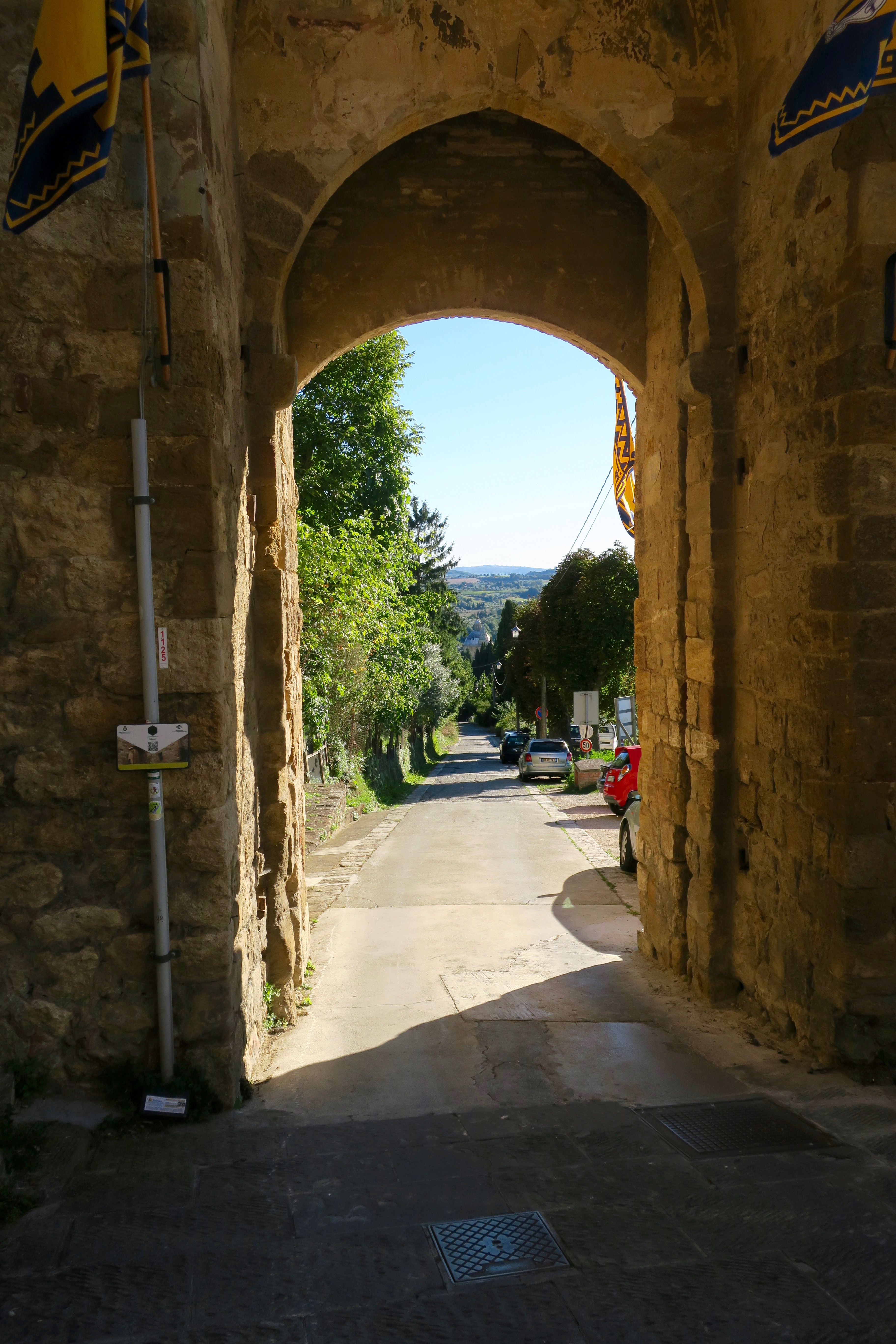




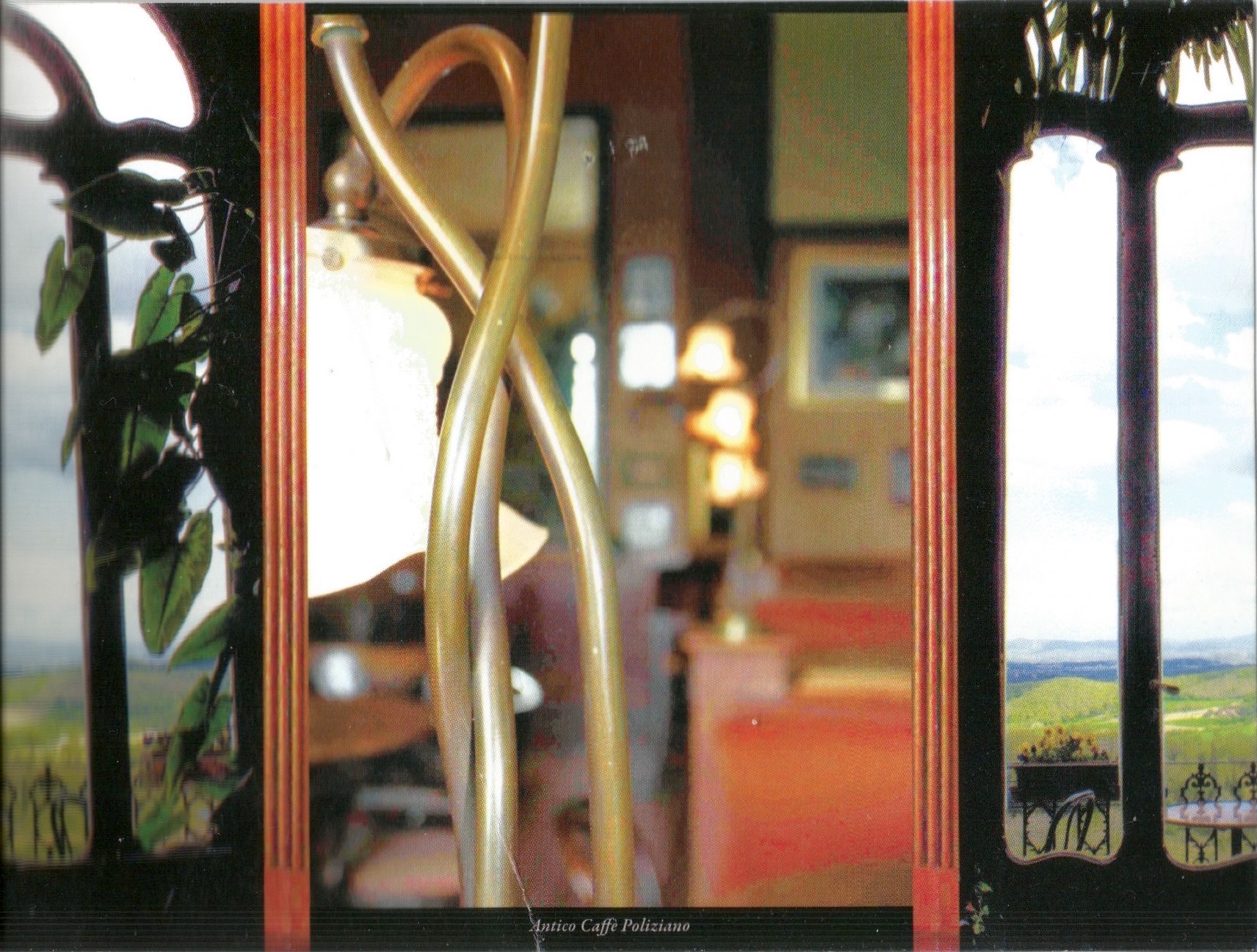

















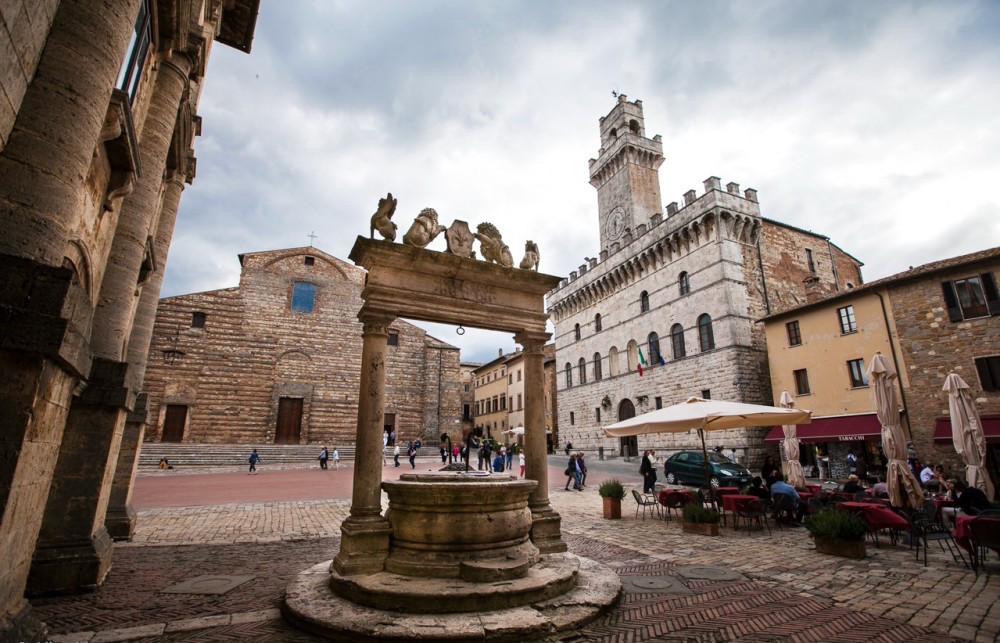
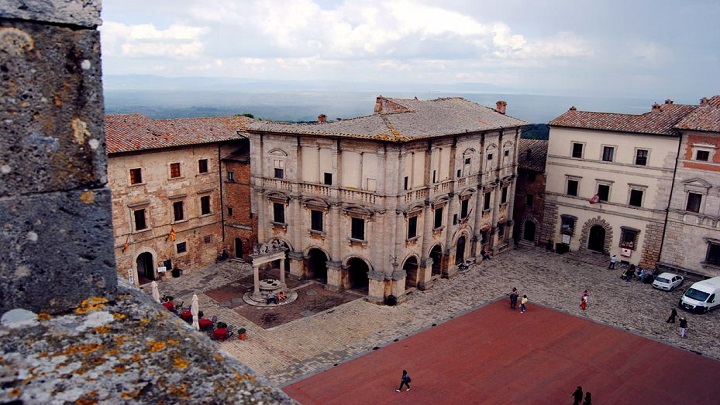
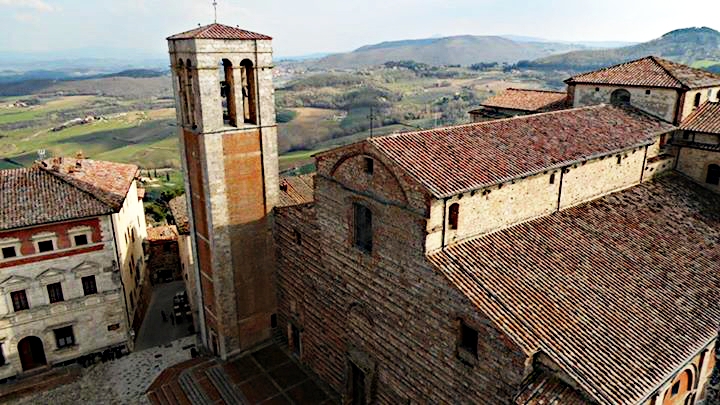
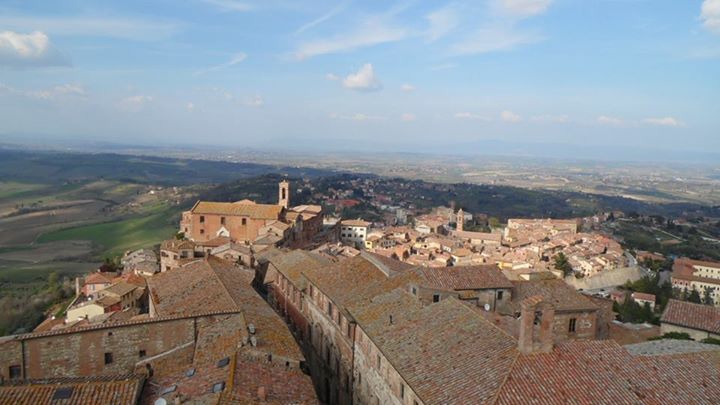
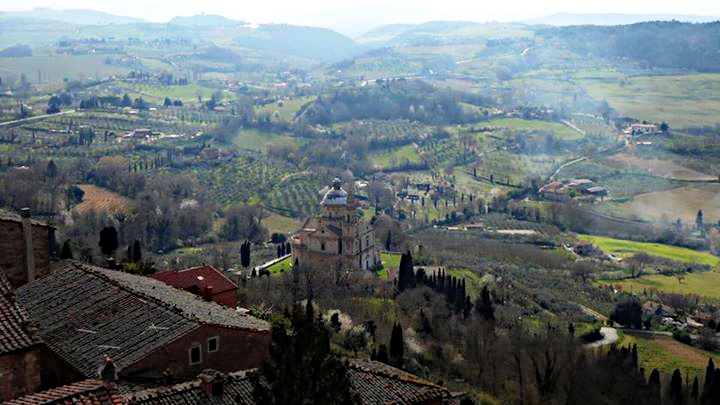



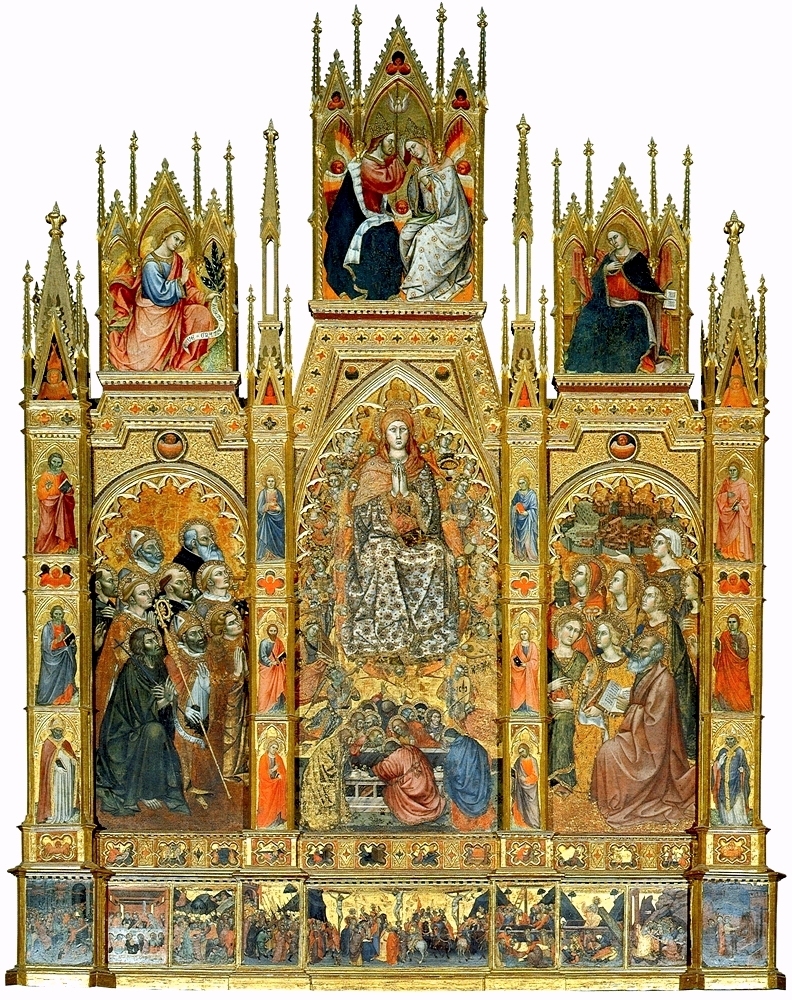









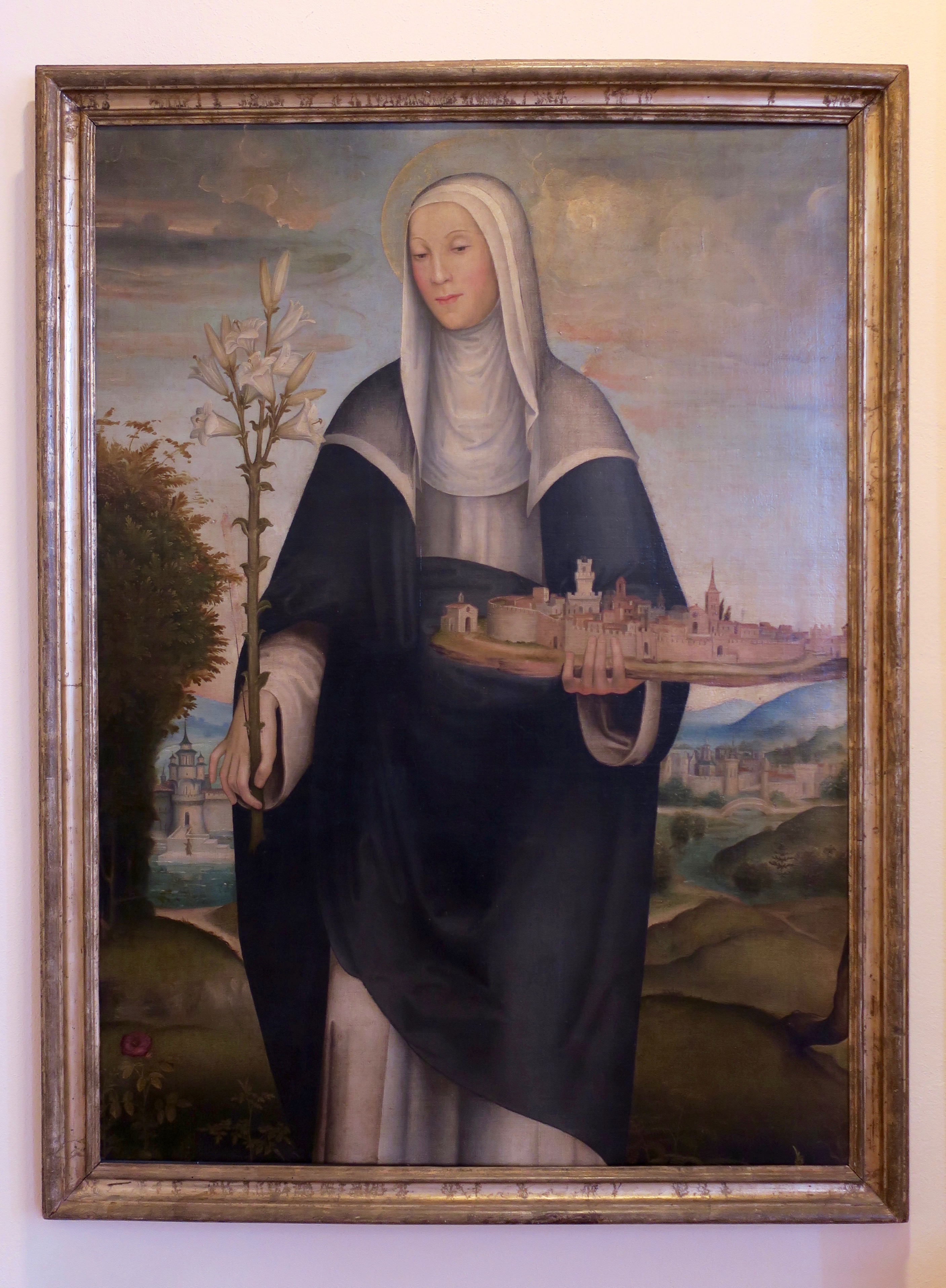



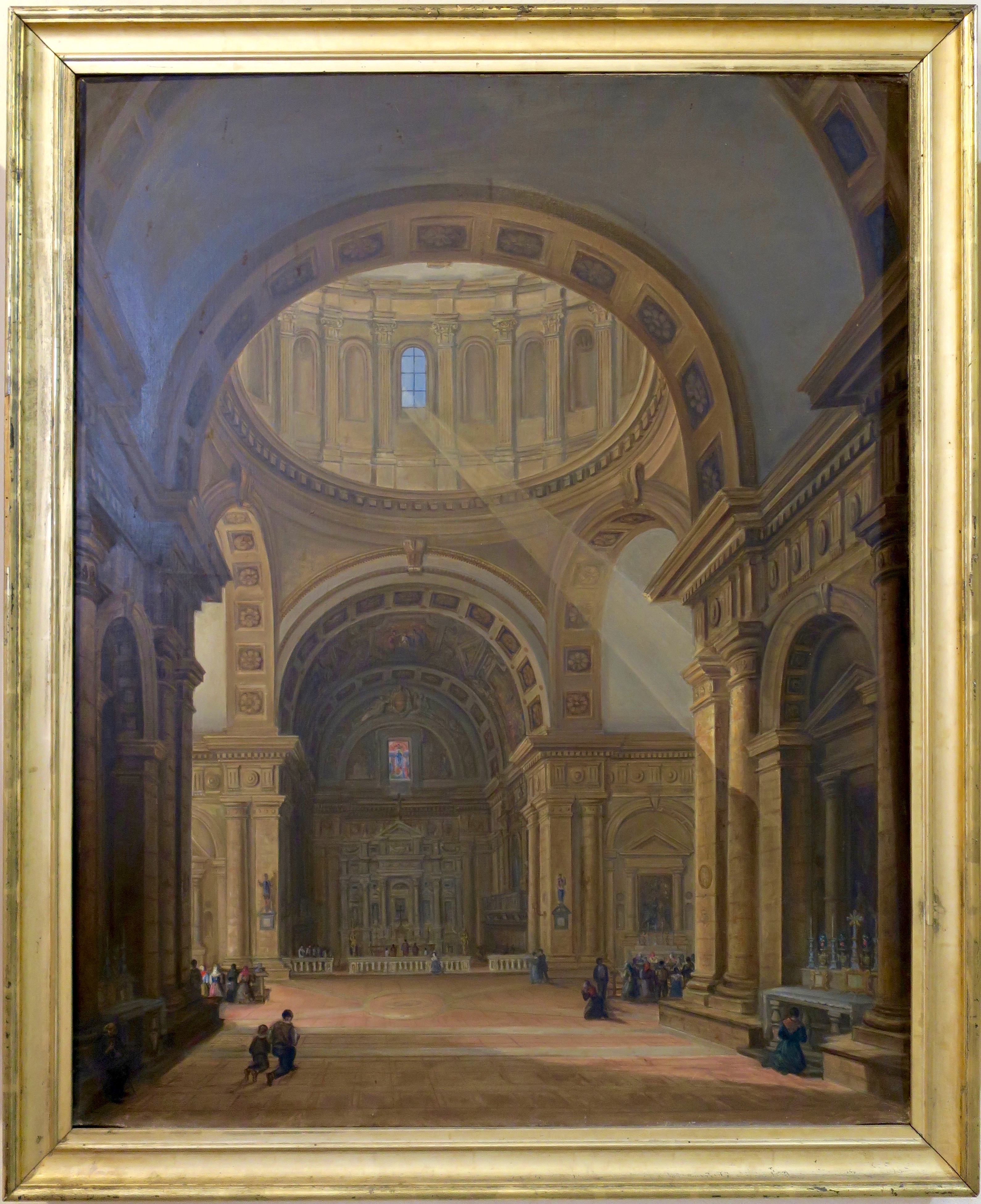
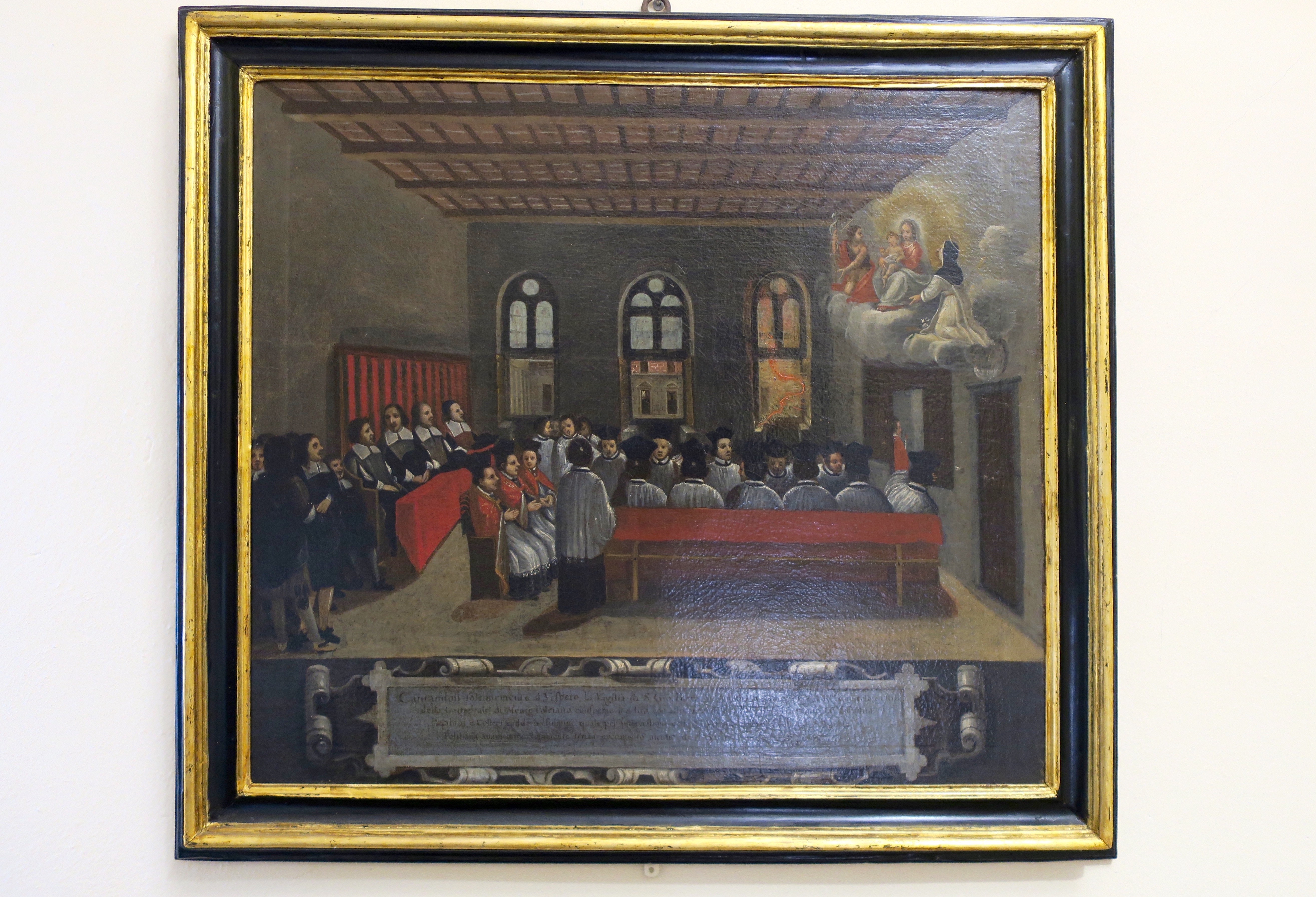





One thought on “Montepulciano”